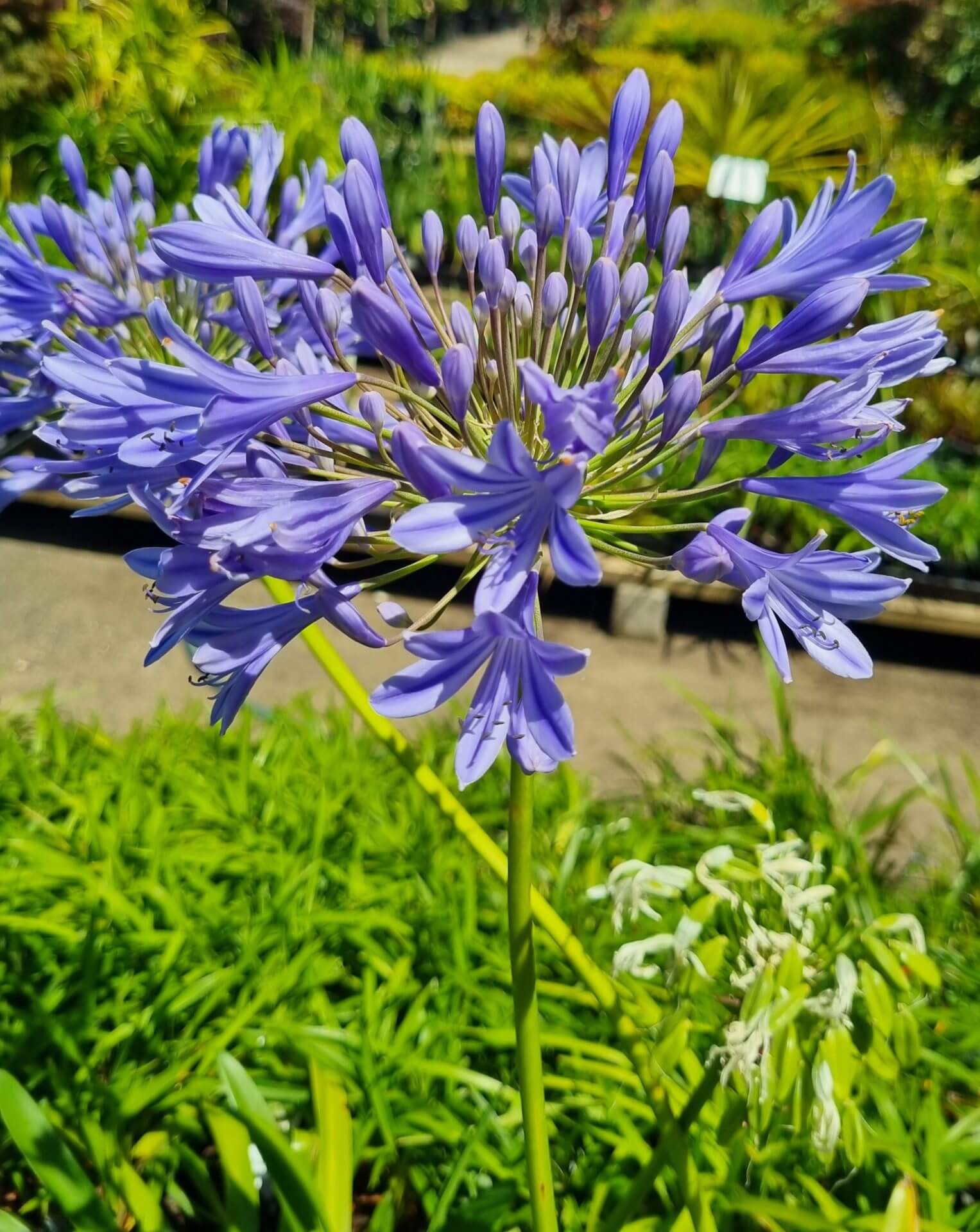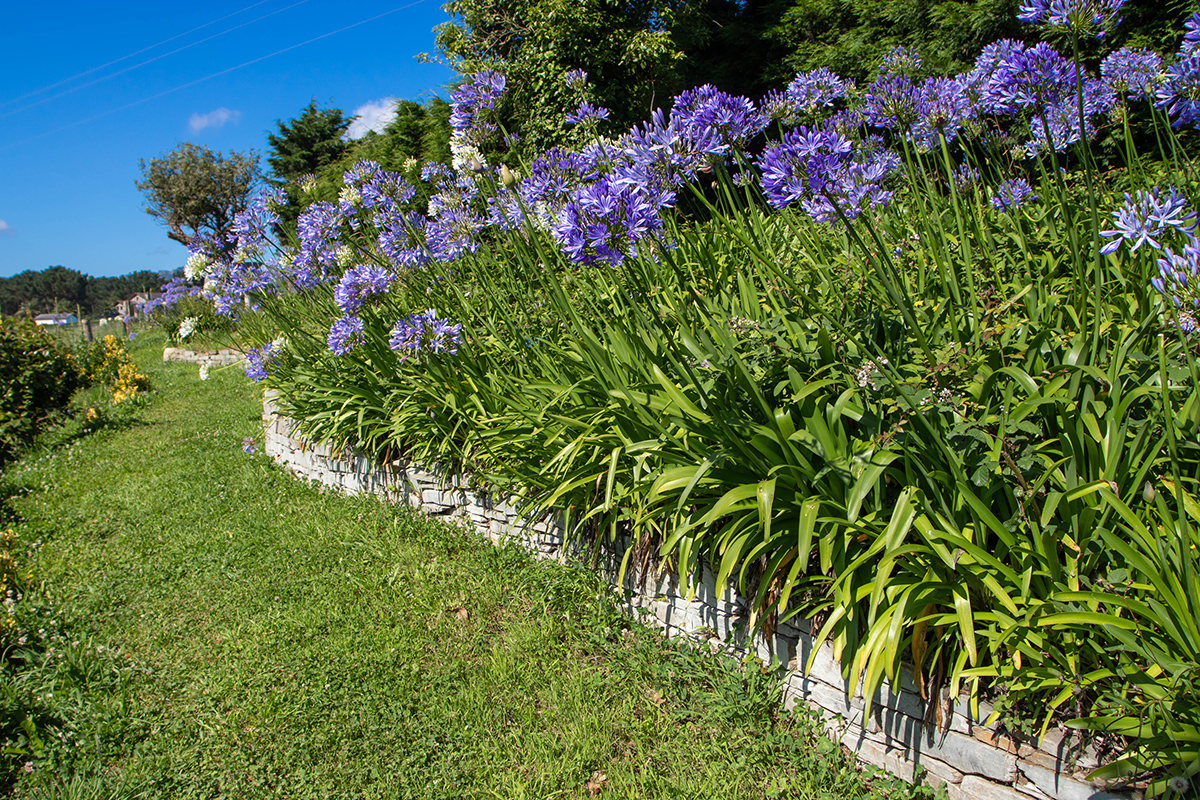Agapanthus Propagation: Tips for Expanding Your Plant Collection
Agapanthus Propagation: Tips for Expanding Your Plant Collection
Blog Article
Unleashing the Secret to Effective Agapanthus Cultivation: Advice for a Flourishing Yard
In the realm of horticulture, growing agapanthus successfully requires a critical approach that incorporates various facets of plant treatment. With careful focus to information, one can open the keys to nurturing these stunning flowers, bring about a yard that prospers with beauty and vibrancy. By understanding the nuances of agapanthus cultivation, one can create an atmosphere where these plants flourish and flower abundantly. In the adhering to discussion, we will explore vital ideas and tricks that will certainly direct you towards a prospering agapanthus garden, providing insights right into best methods, soil problems, sprinkling strategies, and more.
Growing Agapanthus: Ideal Practices
When planting Agapanthus, proper soil preparation is essential for guaranteeing successful growth and development of these gorgeous flowers. Agapanthus, frequently called Lily of the Nile or African lily, flourishes in well-draining dirt with a slightly acidic to neutral pH level - Agapanthus. Before growing, it is vital to change hefty clay soils with natural issue such as compost or peat moss to boost drain and offer important nutrients for the plants
To plant Agapanthus, pick a location that obtains full sunlight to partial color, as this will certainly promote healthy growth and abundant flowering. Dig a hole two times the size of the plant's origin round and put the Agapanthus at the very same deepness it was formerly growing. Delicately backfill the hole with soil, pushing down strongly to get rid of any kind of air pockets around the origins.
Water the newly planted Agapanthus extensively and continue to keep the soil equally damp, specifically during the plant's energetic expanding season. Agapanthus. Using a balanced plant food once a month can even more support the plant's development and flowering. By adhering to these finest methods for growing Agapanthus, you can produce a sensational display screen of these exciting blossoms in your yard
Suitable Soil Conditions for Agapanthus
For ideal growth and flowering success of Agapanthus plants, ensuring the dirt conditions are suitable is essential. Agapanthus favors soil that is rich in nutrients, so integrating a balanced fertilizer throughout the growing period can advertise healthy growth and vibrant blooms.

Watering and Fertilizing Tips
To make sure healthy development and vibrant blooms, appropriate watering and feeding strategies are essential for effective Agapanthus cultivation. Agapanthus plants benefit from regular watering, specifically throughout the expanding season.
When it involves feeding Agapanthus, a well balanced fertilizer with equal parts nitrogen, phosphorus, and potassium can be applied in the spring to promote healthy growth and blooming. Slow-release fertilizers are optimal for giving nutrients progressively over a prolonged period. Avoid over-fertilizing, as this can cause excessive vegetation growth at the expenditure of flowers.
Furthermore, including raw material like garden compost right into the soil can enhance nutrient degrees and enhance soil my response structure, helping in the overall health and wellness of the Agapanthus plants. By adhering to these watering and fertilizing pointers, garden enthusiasts can guarantee their Agapanthus plants grow and generate stunning screens of flowers.
Pruning and Deadheading Techniques
Appropriate trimming and deadheading strategies play an important function in keeping the wellness and aesthetic appeals of Agapanthus plants, complementing the vital techniques of watering and feeding for effective cultivation. Trimming Extra resources Agapanthus includes getting rid of spent flower heads, yellowing or dead fallen leaves, and overall shaping of the plant to promote better development. Deadheading, the procedure of eliminating faded blossoms, not only improves the plant's look but also motivates additional flowering.
When deadheading Agapanthus, it is advisable to snip off the flower stem at the base making use of sharp, clean shears. This process redirects the plant's energy from seed production back right into root and vegetation development, advertising a much healthier and more durable plant. Routine deadheading can extend the growing period of Agapanthus and prevent self-seeding, which can lead to overcrowding.
In regards to trimming, Agapanthus normally gain from a light trim after flowering to clean up the plant and encourage fresh development. Cutting back the invested flower stems and getting rid of any broken or dead vegetation helps preserve the plant's vitality and total appearance. However, it is vital to avoid cutting right into the crown of the plant, as this can damage its wellness.

Protecting Agapanthus From Pests and Diseases
Applying reliable pest and disease monitoring approaches is important to protecting the health and vitality of Agapanthus plants in farming. Agapanthus are usually durable plants, yet they can still succumb various insects and diseases otherwise correctly looked after. One common insect that influences Agapanthus is the Agapanthus borer, a caterpillar that passages right into the plant, creating damages to the blossoms and leaves. To stop problems, routine evaluation of the plants is necessary. If borers are found, they can be by hand eliminated, or insecticidal soap can be utilized as a control procedure.
In enhancement to insects, Agapanthus are vulnerable to illness such as origin rot and fungal fallen leave places. These problems can commonly be stopped by guaranteeing correct drain and avoiding overwatering. If indications of condition show up, affected components of the plant ought to be immediately eliminated to stop additional spread. Fungicides may also be utilized as a treatment measure, adhering to the maker's guidelines thoroughly. By remaining attentive and resolving parasite and condition problems without delay, garden enthusiasts can assist their Agapanthus thrive and thrive.

Verdict
In conclusion, effective farming of agapanthus requires appropriate growing strategies, perfect dirt conditions, appropriate watering and feeding, normal pruning and deadheading, and security from insects and conditions. By adhering to these ideas and methods, garden enthusiasts can guarantee a flourishing yard loaded with dig this beautiful agapanthus blossoms. Agapanthus. Keep in mind to keep consistent care and attention to detail to promote the health and wellness and longevity of these sensational plants
When planting Agapanthus, correct dirt preparation is vital for ensuring successful growth and advancement of these stunning blossoms.Water the recently planted Agapanthus completely and continue to maintain the dirt evenly moist, specifically during the plant's active expanding season.For optimum growth and blooming success of Agapanthus plants, ensuring the dirt problems are perfect is critical. When transplanting or growing Agapanthus, guarantee the dirt is well-prepared to supply the required foundation for the plants to develop themselves efficiently. One common bug that impacts Agapanthus is the Agapanthus borer, a caterpillar that passages into the plant, triggering damage to the blossoms and leaves.
Report this page